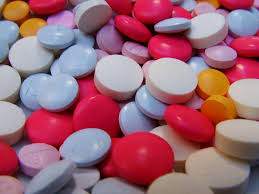Symptom Finder - Hypercholesterolemia
HYPERCHOLESTEROLEMIA
Anatomy is the key to forming a list of possible causes of hypercholesterolemia. If we consider the liver, it should prompt recall of primary biliary cirrhosis, hepatoma, glycogen storage disease, and obstructive jaundice. If we consider the kidney, it should facilitate recall of uremia and the nephrotic syndrome. Considering the endocrine glands should facilitate recall of diabetes mellitus, acromegaly, hypothyroidism, Cushing disease, insulinoma, and isolated growth hormone deficiency.
Two other groups of conditions associated with hypercholesterolemia are drugs and the primary hyperlipoproteinemias. Drugs that may cause an elevated cholesterol level include exogenous estrogen and corticosteroids, thiazides, and β-adrenergic blocking agents. The primary hyperlipoproteinemias include types II-a, II-b, III, and V. These can be differentiated from the other primary hyperlipoproteinemias by determining the presence of chylomicrons and elevated triglycerides.
Types II-a and II-b hyperlipoproteinemia are not associated with elevated chylomicrons. Type II-b is associated with an increased triglyceride, whereas type II-a is not. Type III hyperlipoproteinemia is associated with both chylomicrons and an elevated triglyceride level. Type I hyperlipoproteinemia is not associated with an increased cholesterol, whereas type V is associated with chylomicrons and an increase of both cholesterol and triglyceride levels.
Approach to the Diagnosis
It is wise to repeat the study because many patients have not fasted for 14 hours. One should look for a family history of lipoproteinemia as well as determine what drugs the patient is taking. On examination, one should look for tendon xanthomas. As mentioned above, lipoprotein electrophoresis should be done as well as a lipid profile and overnight refrigeration of plasma to look for lactescence (a sign of chylomicrons). An endocrinology consult will be helpful. A CRP should be done to assess the risk of stroke and myocardial infarction.
Other Useful Tests
1. CBC
2. Sedimentation rate
3. Chemistry panel (liver disease, kidney disease)
4. Urinalysis (nephrosis)
5. Liver profile (biliary cirrhosis, obstructive jaundice)
6. Thyroid profile (hypothyroidism)
7. Antimitochondrial antibody titer (biliary cirrhosis)
8. 24-hour urine protein level (nephrosis)
9. Liver biopsy (cirrhosis)
10. Renal biopsy (nephrosis)
11. Consult with metabolic disease specialist
12. CT scan of the abdomen (Cushing syndrome, renal disease, liver disease)
Anatomy is the key to forming a list of possible causes of hypercholesterolemia. If we consider the liver, it should prompt recall of primary biliary cirrhosis, hepatoma, glycogen storage disease, and obstructive jaundice. If we consider the kidney, it should facilitate recall of uremia and the nephrotic syndrome. Considering the endocrine glands should facilitate recall of diabetes mellitus, acromegaly, hypothyroidism, Cushing disease, insulinoma, and isolated growth hormone deficiency.
Two other groups of conditions associated with hypercholesterolemia are drugs and the primary hyperlipoproteinemias. Drugs that may cause an elevated cholesterol level include exogenous estrogen and corticosteroids, thiazides, and β-adrenergic blocking agents. The primary hyperlipoproteinemias include types II-a, II-b, III, and V. These can be differentiated from the other primary hyperlipoproteinemias by determining the presence of chylomicrons and elevated triglycerides.
Types II-a and II-b hyperlipoproteinemia are not associated with elevated chylomicrons. Type II-b is associated with an increased triglyceride, whereas type II-a is not. Type III hyperlipoproteinemia is associated with both chylomicrons and an elevated triglyceride level. Type I hyperlipoproteinemia is not associated with an increased cholesterol, whereas type V is associated with chylomicrons and an increase of both cholesterol and triglyceride levels.
Approach to the Diagnosis
It is wise to repeat the study because many patients have not fasted for 14 hours. One should look for a family history of lipoproteinemia as well as determine what drugs the patient is taking. On examination, one should look for tendon xanthomas. As mentioned above, lipoprotein electrophoresis should be done as well as a lipid profile and overnight refrigeration of plasma to look for lactescence (a sign of chylomicrons). An endocrinology consult will be helpful. A CRP should be done to assess the risk of stroke and myocardial infarction.
Other Useful Tests
1. CBC
2. Sedimentation rate
3. Chemistry panel (liver disease, kidney disease)
4. Urinalysis (nephrosis)
5. Liver profile (biliary cirrhosis, obstructive jaundice)
6. Thyroid profile (hypothyroidism)
7. Antimitochondrial antibody titer (biliary cirrhosis)
8. 24-hour urine protein level (nephrosis)
9. Liver biopsy (cirrhosis)
10. Renal biopsy (nephrosis)
11. Consult with metabolic disease specialist
12. CT scan of the abdomen (Cushing syndrome, renal disease, liver disease)

